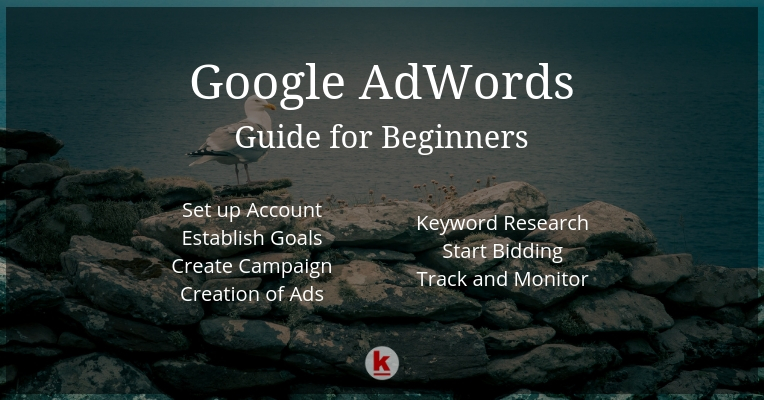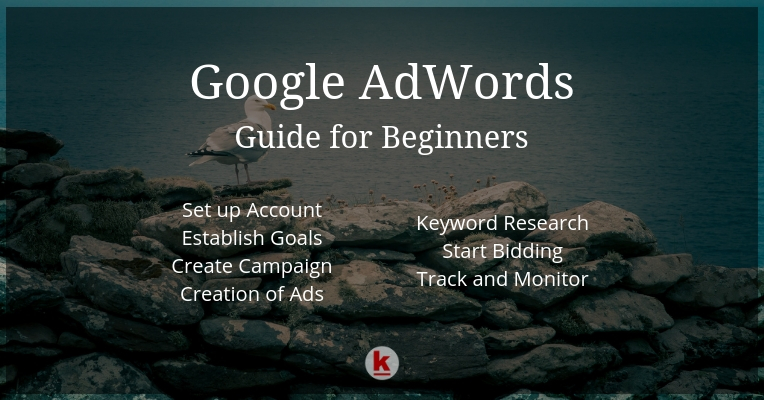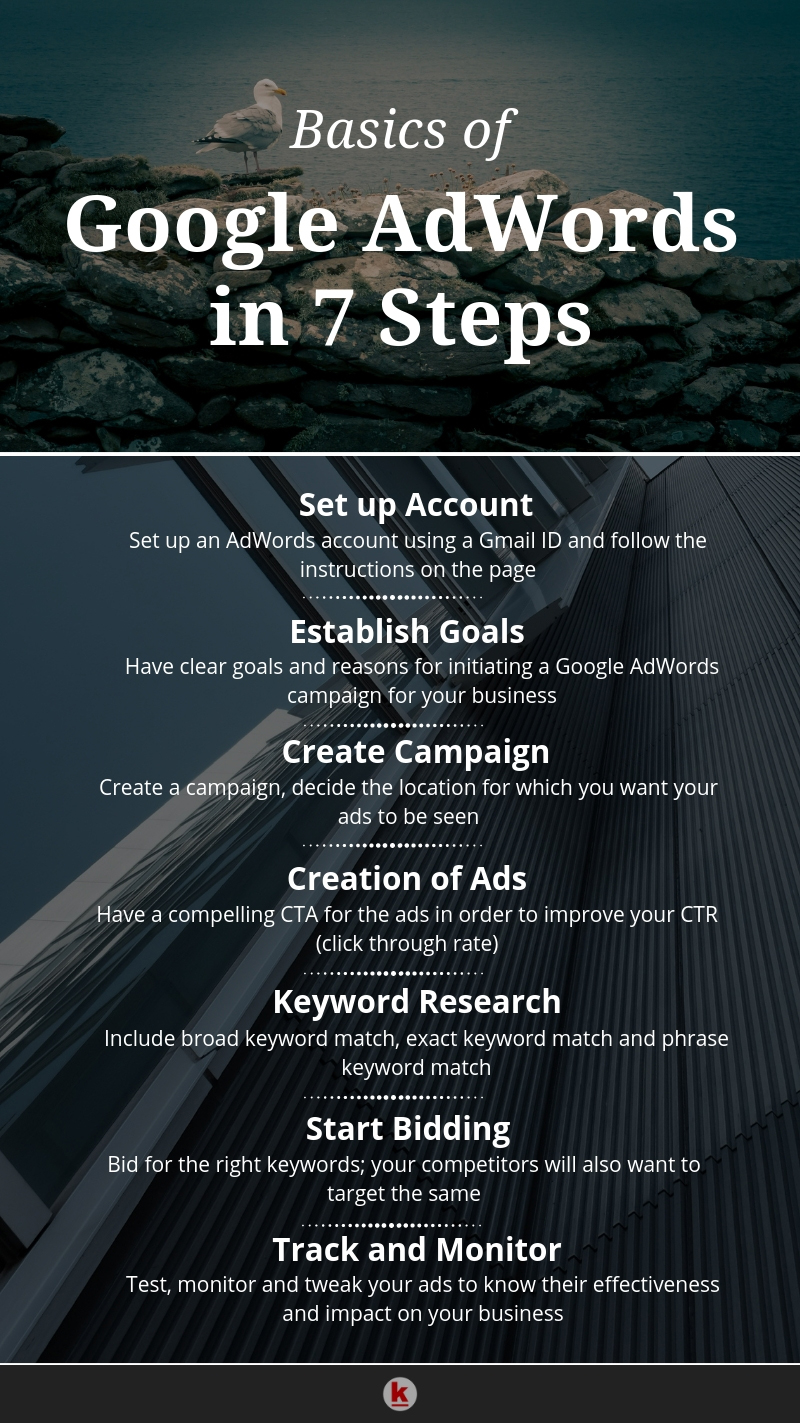
Learning Google Adwords Basics in 7 Steps

Marketers usually grumble when they are unable to track and measure campaigns and the results associated. But with Google Adwords, measuring every single aspect of the marketing campaign is possible. It is a paid service to spread the word about your business on search engines.
Not sure how to use Google AdWords for your online business? Here is a step by step Google Adwords guide for beginners.
Set up Account
Setting up a Google AdWords account is easy. As a visitor, you will be provided with the instructions on the web page to make it easy for you to proceed.
Make a list of clear goals that you wish to achieve by using this service. Then plan how you can achieve this.
Once the account is set up, you will be asked to fill in various factors like the budget, locations, network and keywords. This is the starting point for you to start thinking about the ads you want to run.
Establish Goals
When getting started with Google Adwords, be clear and precise with the goals so that achieving them becomes easy.
A goal without a plan will not yield fruitful results for a long time. Understand what is it that you want to achieve with the PPC campaign.
This is the first step and if you are able to get through this easily, you have a smooth process ahead.
Create Campaign
Create a campaign for the targeted keywords. Decide if the campaign will be country specific or global. For this you need to know which audience you want to target.
Set a price for the keywords and the number of keywords you want to target. All in all put your budget in place.
After you’ve set up the campaign, create a landing page, where you want your audience to be redirected to. Have a lucrative CTA that makes the user to take an action on the landing page. You can add a lucrative offer on the landing page that appeals to the target audience.
Creation of Ads
With every prerequisite being complete now, you can now create an ad!
The content on the ads is what attracts the users in the first place. The CTR (click through rate) is determined by the effectiveness of your headlines, a CTA and the keywords you are bidding on.
A tip to remember– ads that seem to be inclined to the emotions of the users have a better CTR.
Keyword Research
Choose keywords that are specific to your business or are aligned with your business product. You can add around 15 – 20 keywords. This is why you need to target and bid right for the determined keywords.
Conduct a thorough keyword research for your ads. An ideal keyword that can get you maximum traffic is one that has a search volume that is neither too high nor too low.
There are three types of keywords match – the broad keyword match, the phrase match and exact match keyword. The usage of these keywords decides how your Google Ad will appear.
Broad match
Keywords falling under this category can also be called as the generic keywords.
For example – the keyword is “women handbags” so the ad will be shown for this and every other related keyword. If you search for “accessories for women”, your ad could be seen for this keyword, this is because the keyword “accessories for women” is a more generic keyword and your ad for “women handbags” falls under this category.
Phrase match
In this case, your ad will be visible to users who search for the keywords that are closely related with the exact keyword. This is flexible than the exact match and more precise than broad keyword match.
Exact match
The ads that show up for these keywords are the ones that match the exact term or are closely relatable with the exact term.
For example the keyword is women handbags, so the ad will be seen for keyword “women handbags” and as well for closely aligned keywords like “handbags for women”, etc.
By default the keyword match is broad. The type of keyword match that proves to be good for your business varies from strategy to strategy. So you need to master all three in a way that your ad appears for all three keyword matches. This sounds easy but in real it takes a lot of effort and skills to master this. So, if you are able to master this, you sure have a better chance of succeeding with this.
Bidding
Before your Google Ad goes live, you need to bid for the appropriate keywords.
Once you’ve selected the keywords, it is now time to bid on those keywords. This means that your ad will be visible for the keywords that you’ve bid on. If a keyword is highly relevant, your competitors might also want to rank for the same keyword. Thus, increasing the price for the keyword.
For example, if you run an online candy store and your website ranks well for keywords like “best candy store in town”, then you could possibly use this keyword in your ads campaign.
Once you’ve done the payment for the keywords, the Google AdWords account is live.
Regularly Monitor
Just like any marketing campaign, you need to monitor your paid ads regularly to see how effective they’ve been. Analyzing and monitoring will help you overcome the flaws and thus improve your paid campaign.
If at any point you feel that the campaign is not yielding good results, you can tweak the strategy and monitor it again to see any difference. The best ads are made by constant tweaking until they reach their highest potential.
The changes that you have saved for the campaign can be changed and edited at any time.
Now that we’ve covered how to use Google AdWords, you should know that the results vary from business to business and the strategy implemented. Thus testing is the solution to improve your current strategy.
As we wrap up the blog, we hope that you now have a better understanding of Google AdWords.
Want to get your articles published on our website? Read the terms for guest post here!
